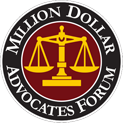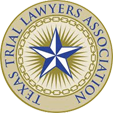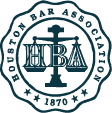Your Guide to Legal Representation After an Airplane Crash
Flying is often celebrated as one of the safest modes of transportation. However, when accidents do occur, they can be catastrophic, leaving victims and their families in a state of shock and confusion. In such trying times, the expertise of a Houston Aviation Accident Attorney becomes invaluable. Houston, with its bustling airports and significant air traffic, sees its fair share of aviation incidents. This comprehensive guide aims to navigate the complexities of aviation accidents and the legal avenues available to those affected.
Understanding Aviation Accidents in Houston
Houston’s status as a major transportation hub means that the risk of aviation accidents, though statistically low, is ever-present. From commercial airline disasters to private plane mishaps, these incidents can have devastating consequences. The National Transportation Safety Board (NTSB) and the Federal Aviation Administration (FAA) are typically at the forefront of investigating these accidents, scrutinizing every detail to determine the cause and prevent future occurrences.
Causes of Aviation Accidents
The causes of aviation accidents are multifaceted and can range from human error to mechanical failure. Pilot error remains one of the most common contributors, where a moment’s misjudgment can lead to tragedy. Mechanical defects and maintenance failures also play a significant role, as do severe weather conditions and errors by air traffic controllers. In some cases, the pressure on pilots from airlines to meet tight schedules can lead to safety oversights, while at other times, adherence to or violations of FAA regulations can be the pivot on which liability turns.
Legal Rights and Regulations
Navigating the aftermath of an aviation accident involves an intricate interplay of federal and state regulations. The Federal Aviation Regulations (FARs) govern every aspect of civil aviation in the United States and are a critical component of aviation law. In Texas, the Texas Wrongful Death Act and Texas Survival Statute provide avenues for families to seek justice and compensation following the loss of a loved one due to negligence. Understanding these rights is crucial, and having an experienced attorney can ensure victims and their families receive the fair trial and compensation they deserve.
The Aftermath of an Aviation Accident
In the wake of an aviation accident, immediate steps need to be taken to protect the rights of the victims. Seeking medical attention is paramount, not only for the well-being of the injured but also to document the injuries sustained — a crucial aspect of any legal claim. It is also advised to avoid speaking with corporate representatives or insurance adjusters without legal representation, as these conversations can impact the outcome of compensation claims. The legal rights of passengers and crew members in aviation accidents are protected, but they need the right guidance to navigate the complex legal landscape.
Selecting a Houston Aviation Accident Attorney
Choosing the right aviation accident attorney in Houston is a decision that can significantly affect the outcome of a case. The attorney should possess a deep understanding of aviation laws, a history of handling similar cases successfully, and the ability to communicate effectively with clients from diverse backgrounds. At Adley Law Firm, we offer a free consultation and work on a contingency fee basis, ensuring that our clients pay no upfront costs and only pay legal fees if we win their case.
The Legal Process and Compensation Claims
The legal process for aviation accident claims involves several stages, from investigation to settlement negotiations or trial. Victims may be entitled to a range of compensation, including for medical expenses, lost wages, and pain and suffering. In cases of wrongful death, families can seek compensation for lost support and funeral expenses through a Houston wrongful death lawyer. Understanding the statute of limitations is also crucial, as Texas law generally allows two years from the date of the accident to file a claim.
In the next half of this article, we will delve into the steps involved in building a strong aviation accident case, the types of injuries commonly sustained in these accidents, and the importance of having a seasoned Houston aviation accident attorney by your side to navigate the legal process and fight for the compensation you deserve.
Continuing from where we left off, let’s explore the intricacies of building a strong case and the critical role of a Houston Aviation Accident Attorney in securing justice and fair compensation for victims.
Building a Strong Aviation Accident Case
A meticulous investigation is the bedrock of a compelling aviation accident claim. At Adley Law Firm, we collaborate with top aviation experts and medical professionals to thoroughly analyze every aspect of the incident. This includes reviewing flight data, maintenance records, and pilot logs to pinpoint the exact cause of the accident. Determining liability is a complex process that may involve multiple parties, including pilots, aircraft manufacturers, maintenance facilities, and even airport management. Our goal is to build an irrefutable case that clearly demonstrates negligence and secures the maximum compensation for our clients.
Settlements and Trials
When it comes to settlements, aviation companies may initially offer compensation that falls short of what victims rightfully deserve. A skilled aviation accident attorney will negotiate vigorously on your behalf, ensuring that any settlement reflects the true extent of your losses. If a fair settlement cannot be reached, we are prepared to take the case to trial, where our strategic litigation skills come to the forefront. Aviation accident cases often involve complex jurisdictional issues, especially when incidents occur across state lines or international borders. An experienced attorney will navigate these legal hurdles to determine the most favorable court for your case.
Types of Injuries in Aviation Accidents
The injuries resulting from aviation accidents can be severe and life-altering. Victims may suffer from traumatic brain injuries (TBI), spinal cord damage, fractures, burns, and even psychological trauma such as Post-Traumatic Stress Disorder (PTSD). Each type of injury requires specialized medical attention and can lead to long-term consequences, impacting the victim’s quality of life and ability to work. Our firm is committed to ensuring that all medical costs, both current and future, are covered in the compensation we seek.
Safety Tips for Air Travel
While the legal focus is on post-accident representation, it’s also important to be proactive about safety. We encourage air travelers to follow safety instructions, read the safety card, stay alert during critical phases of flight, and always wear a seatbelt. Understanding how to use oxygen masks and having an emergency plan can also make a difference in ensuring passenger safety.
Why Choose a Houston Aviation Accident Attorney
Choosing a Houston-based attorney like Adley Law Firm means you have a team that’s well-versed in local aviation laws and has a national reach to handle complex cases. Our attorneys are dedicated to providing personalized attention, ensuring that you understand every step of the legal process. We take pride in our ability to represent all members of our community, reflecting our belief that “it is only possible to successfully represent the people in our communities when we can successfully represent all people.”
Conclusion
Aviation accidents are rare but devastating events that require the expertise of a seasoned Houston Aviation Accident Attorney. From navigating the legal system to negotiating with insurance companies and fighting for your rights in court, the right attorney can make all the difference in the outcome of your case. If you or a loved one has been involved in an aviation accident, contact Adley Law Firm for a free consultation. Our experienced team is ready to provide the support and representation you need to achieve the justice and compensation you deserve.
Remember, time is of the essence in aviation accident cases. Don’t hesitate to reach out to our firm to ensure your rights are protected and your case is handled with the care and expertise it warrants.
Get in touch with our experienced aviation accident lawyers immediately by calling us at (713) 999-8669 or schedule a free consultation.






